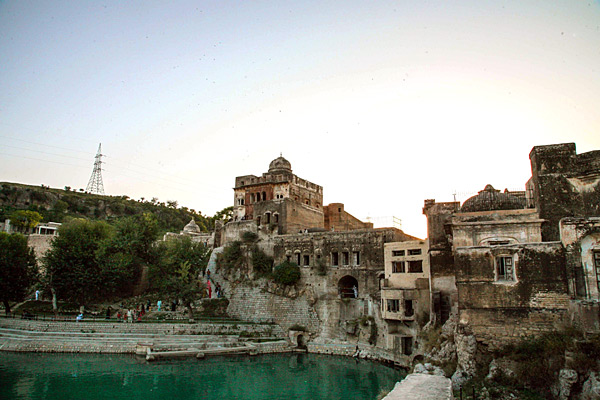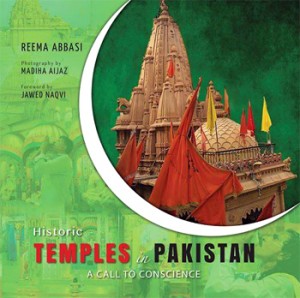
Reema writes at the start of the book Historic Temples in Pakistan: A Call to Conscience that her endeavor focuses on Pakistan’s fraying social order and the sad prospect of it bringing about its own destruction. In recent decades, the country’s minorities have come under severe attack from extremists and the state has often seemed indifferent or worse, culpable. Reema’s concern is not misplaced. In 1947, the non-Muslim population was nearly 23%. Today it is around 5%. Granted that the separation of East Pakistan caused a major decline in this number but we are all aware of Hindus, Sikhs and Christians migrating abroad. In fact, it has become a class-based exodus. The relatively privileged are the first ones to leave, and sadly, for the right reasons.
This collage of forty temples is accompanied with stunning photographs and heart-wrenching stories. For instance, during her visit to the Balmiki Temple in Lahore, Reema tells us how different faiths gather at the shrine and even a cross is located within the temple. But the Hindu residents are scared and often conceal their identity. They have to adopt Muslim manners and customs so that they are not identified and subsequently persecuted by the extremists within the majority population. The vivid photographs make this book even more compelling and one must acknowledge Madiha’s immense skills at capturing the beauty of our forlorn past.
The last spate of vile destruction of temples in Pakistan took place as a result of the Babri mosque’s destruction in the early 1990s. Reema notes that nearly 1000 temples were targeted during that frenzy. Many of us who were familiar with the spectacular gems of devotional architecture saw them being vandalized and in some cases razed to the ground. But there are greater forces at work. The land mafia and builders are now at the forefront of getting the temples out of the way so that ugly buildings can be built on that land, or the precious land can be parceled out for victory.
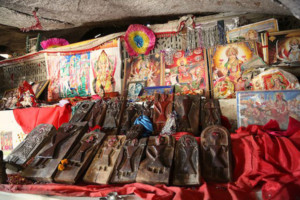
Muslim men showing reverence to the mighty goddess Kali inside the Kalka cave in Sindh makes for a fascinating tale
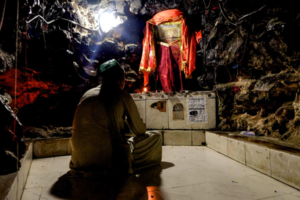
The devotees still believe that he lives under the water and the river flows the way he commands
Stories such as those of a Hindu saint who adopted the Islamic faith to promote inter-faith unity would sound like fiction for many Pakistanis, especially those raised after the 1980s when the exclusivist and Muslim-centric ideology of Pakistan became the overriding obsession of Pakistanis.
Pakistan’s history is plural and complex. Ideological straitjacketing has only deprived us of the chance to nurture multiple identities; and has undermined our rich heritage. For example, Sehwan Sharif, the site of Lal Shahbaz Qalandar’s tomb in Sindh was also the location of a prominent Shiva centre. Some believe that the name Sehwanistan has been derived from Sivistan, city of Shiva. In fact there is an uncanny similarity between the dressing of faqirs and Shivite yogis as both dress in torn clothes with matted hair.
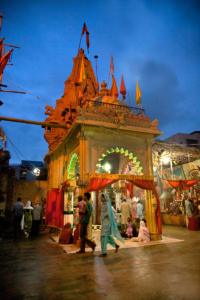
In Uderolal Sindh, the tomb of a saint referred to as Shaikh Tahir by the Muslims is known as Jhulelal or Uderolal by the Hindus. Both refer to him as the Zindapir (Living Saint). Uderolal is one of the places where the Indus is still worshipped by both Hindus and Muslims. Just like Lal Shahbaz Qalandar, Khwaja Khizr is also referred to as Zindapir and pani ka badshah, (Water King). The devotees still believe that he lives under the water and the river flows the way that he commands. As recently as the late nineteenth century, Hindus and Muslims also worshipped side-by-side at the Zindapir shrine in Sukkur.
Such meta-religious beliefs and practices can also be understood with reference to the great Sindhi poet-saint Shah Abdul Latif’s Risalo. It is given equal reverence by both Hindus and Muslims, and contains excerpts from the Quran, the traditions of the Holy Prophet, Persian poetry and Sindhi folk tales. In this vein, Reema tells us how the Ratneshwar Mahadev Mandir in Karachi’s Clifton is situated next to the famous Sufi shrine of Hazrat Abdullah Shah Ghazi. Ghazi’s shrine and the lesser known Shiva temple are the patrons of the city and protect it against the excesses of nature.
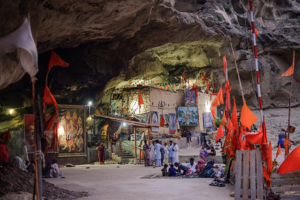
The book also informs the readers as to how Pakistan’s Hindu temples cover all the branches of Hindu faith Shaivism, Vaishnavism and Shaktism. In addition, the temple at Manora near the Arabian sea, is dedicated to Varuna, lord of the oceans. In Pakistan, most Hindus are Dalits and their Balmiki temples are found in various parts of the country. In Sindh, most Hindus are Dalit Meghwars or tribal Bhils. The state of temples and the threats they face are similar to what their worshippers face.
Jinnah, despite the Islamic sloganeering of the 1940s did not want Pakistan’s minorities to face exclusion. In his forgotten speech of August 11 he emphasized the need to protect the minorities and ensure that the state would be neutral. Six decades later, that vision has been lost and the right wing says Jinnah never made any such promises. His speech is not even available with Radio Pakistan. However, journalists like Reema Abbasi will continue to remind everyone of the diversity of Pakistan and why it is necessary to nourish it for the creation of a sane and peaceful society.
